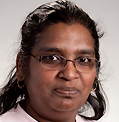1E: Exercises
( \newcommand{\kernel}{\mathrm{null}\,}\)
For every positive integer n, prove that 1(1)(2)+1(2)(3)+⋯+1(n)(n+1)=nn+1.
- Answer
-
We can rewrite each term as 1k(k+1)=k+1−kk(k+1)=1k−1k+1. Therefore, the sum telescopes as follows: 11−12+12−13+⋯+1n−1n+1=1−1n+1=nn+1.
For any positive integer n, prove that 2n32n−1 is always divisible by 17.
- Answer
-
By Fermat's Little Theorem, 216≡1(mod17)$and$316≡1(mod17). Therefore, 216n≡1(mod17) and 332n≡1(mod17). Hence, 2n32n−1≡1⋅1−1≡0(mod17).
a. Let a,b,c∈Z+. Show that gcd(a,bc)=1 if and only if gcd(a,b)=1 and gcd(a,c)=1.
b. Let a,b,c,d∈Z. If a|b and c|d, show that gcd(a,c)|gcd(b,d).
Show that a5≡a(mod5) for all integers a.
Using Euclidean algorithm to find gcd(2520,154) and express gcd(2520,154) as an integer combination of 2520 and 154. Also,
Using the Euclidean algorithm to find gcd(−2520,154) and express gcd(−2520,154) as an integer combination of −2520 and 154.
For every positive integer n, prove that n3−n is divisible by 3.
For any k∈N prove that gcd(4k+3,7k+5)=1.
a) Use the Euclidean algorithm to find the gcd(−29,571)?
b) Find integers x and y s.t. gcd(−29,571)=−29(x)+571(y)?
Show that any two consecutive odd integers are relatively prime.
If m,n are any odd integers, show that m2−n2 is divisible by 8.
a) Prove that for all integers n≥1,
12!+23!+⋯+n(n+1)!=1−1(n+1)!.
b) Prove that for all integers n≥1,
1√1+1√2+⋯+1√n≥√n.
For integer n≥1, define
Sn=−(22)+(32)−(42)+(52)⋯+(2n+12).
-
Evaluate Sn for n=1,2,3,4 and 5.
-
Use part (a) to guess a formula for Sn.
-
Use mathematical induction to prove your guess.
Find the remainder when 8391 is divided by 5.
For each of the following pairs of integers a and n. show that a and n are relatively prime, determine multuplicative inverse of [a] in Zn, and Find all integers x for ax≅11(modn).
- a=16,n=35.
- a=69,n=89.
Find the remainder when (201)(203)(205)(207) is divided by 13.


